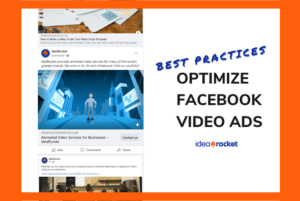We have written before about all the possible heroes for your marketing story, but let’s be up-front: usually it’s best to let the hero be your customer. This narrative has the advantage of being about someone your customers already care deeply about: themselves.
But let’s back up for a second. What is a story? Often in the business world, the word is used somewhat promiscuously. Sometimes people say “story” and mean an argument, or a list of features or benefits. Sometimes they say “story” and they are really referring to a series of events.
What, you say? Isn’t a story a series of events? Surely it is, but a series of events is not necessarily a story.
So what is a story then? A story is about a character with a need. The character acts to address that need, and this action results in either failure or success. That is all a story is. Take Hamlet: a Danish fellow needs to avenge his father’s death, he gathers his conviction to act, and he gains his revenge (in a rather messy way.) If you inspect any novel, movie, play, or TV show you have ever seen, you will recognize in it a character with a need, their actions to meet that need, and the outcome of those actions.
This is important not because a story is an entertaining thing (although it is,) and not because we want our marketing to be entertaining (although we do,) but because stories are the building blocks of our personality and our humanity. They are the way we understand our own lives, and how we assess the lives of others. They are how we create our view of the world, and our place in the world. Entertainment aside, this is the language that lands in your customers’ psyches.
What does your customer’s story look like? Maybe something like this:
Act 1: Our hero has a glaring need. It’s either a problem that weighs on his life, or a benefit that can be grasped to assist him or those near him.
Act 2: Our hero discovers a product or service that can relieve this problem, bringing a significant benefit.
Act 3: Our hero enjoys the fruits of his actions: the problem has been limited or eliminated and the benefit has blossomed, thanks to our product or service.
Does this seem cliché? Haven’t you seen this before a million times? Of course you have. Cliché is the inevitable dreary flip-side of the universal. Even Shakespeare wasn’t original – all but a couple of his stories are filched from other sources. Which is to say: execution counts! The story will seem cliché if you tell it in a pedestrian way, but if you speak with a fresh voice, if you’re specific in your details and you bring texture, style, humor or pathos to your tale, it will not seem cliché at all.
By all means experiment! There are countless ways to tell your customer’s story.
In this commercial for Dare Breton gluten-free crackers, we go through all three acts in just 30 seconds. The folks at Toronto’s Grip Agency developed this narrative from a real user’s correspondence.
We told this story for Boounce in the second person, so the hero is actually the viewer – never seen in the video except for his cursor. There are two stories that are super-imposed here: finding Boounce, and finding a puppy. This brings a layer of emotional warmth to what might otherwise be an emotionally sterile subject. (It is also one of the earliest videos we produced.)
Does your customer hero need to be a person? Not necessarily. In this video for SecureExchange (now Zelle,) the hero is the customer’s money. Still, you see the three-act structure: 1. The money is locked up in a bank. 2. The money is freed to fly by SecureExchange. 3. The money brings benefits to its holder.
Is story-telling just for videos or commercials? Emphatically, no. Every asset in your marketing mix can help tell your customer’s story. So start weaving some tales! And sign up below for our newsletter if you’d like to keep up with our content.




